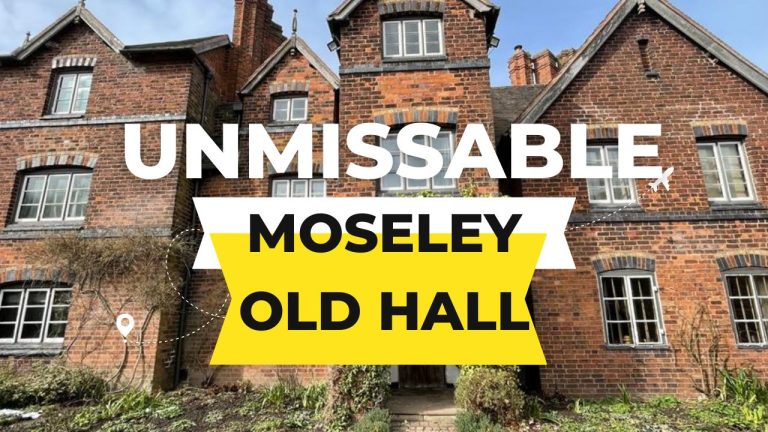York Minster: The Essential Guide
The Cathedral and Metropolitical Church of Saint Peter in York is known less formally simply as York Minster. That’s quite a mouthful. Let’s break all that down, shall we…
[/et_pb_text][/et_pb_column][/et_pb_row][et_pb_row _builder_version=”4.15.0″ _module_preset=”default” global_colors_info=”{}”][et_pb_column type=”4_4″ _builder_version=”4.15.0″ _module_preset=”default” global_colors_info=”{}”][et_pb_text _builder_version=”4.15.0″ _module_preset=”default” global_colors_info=”{}”]A Rose by Any Other Name
[/et_pb_text][/et_pb_column][/et_pb_row][et_pb_row _builder_version=”4.15.0″ _module_preset=”default” column_structure=”1_5,3_5,1_5″][et_pb_column _builder_version=”4.15.0″ _module_preset=”default” type=”1_5″][/et_pb_column][et_pb_column _builder_version=”4.15.0″ _module_preset=”default” type=”3_5″][et_pb_image src=”http://historywithhenry.com/wp-content/uploads/2022/04/IMG_4018.jpg” _builder_version=”4.15.0″ _module_preset=”default” alt=”York Minster” title_text=”IMG_4018″ hover_enabled=”0″ sticky_enabled=”0″ align=”center” width=”81%”][/et_pb_image][/et_pb_column][et_pb_column _builder_version=”4.15.0″ _module_preset=”default” type=”1_5″][/et_pb_column][/et_pb_row][et_pb_row _builder_version=”4.15.0″ _module_preset=”default” global_colors_info=”{}”][et_pb_column type=”4_4″ _builder_version=”4.15.0″ _module_preset=”default” global_colors_info=”{}”][et_pb_text _builder_version=”4.15.0″ _module_preset=”default” global_colors_info=”{}”]The inclusion of Metropolitical in the formal name refers to the Archbishop of York’s role as the Metropolitan bishop of the Province of York. The title of “minster” has become honorific but was historically officiated on churches established in the Anglo-Saxon period as missionary teaching churches. The minster is the seat of the Archbishop of York, who holds the third-highest office of the Church of England preceded only by the monarch as Supreme Governor and the Archbishop of Canterbury. The York Minster is the mother church for the Diocese of York and the Province of York which lies in the English district of North Yorkshire.
[/et_pb_text][/et_pb_column][/et_pb_row][et_pb_row _builder_version=”4.15.0″ _module_preset=”default” global_colors_info=”{}”][et_pb_column type=”4_4″ _builder_version=”4.15.0″ _module_preset=”default” global_colors_info=”{}”][et_pb_text _builder_version=”4.15.0″ _module_preset=”default” global_colors_info=”{}”]Would You Look at That
[/et_pb_text][/et_pb_column][/et_pb_row][et_pb_row _builder_version=”4.15.0″ _module_preset=”default” column_structure=”1_2,1_2″][et_pb_column _builder_version=”4.15.0″ _module_preset=”default” type=”1_2″][et_pb_image src=”http://historywithhenry.com/wp-content/uploads/2022/04/IMG_1822.jpg” _builder_version=”4.15.0″ _module_preset=”default” alt=”York Minster” title_text=”IMG_1822″ hover_enabled=”0″ sticky_enabled=”0″][/et_pb_image][/et_pb_column][et_pb_column _builder_version=”4.15.0″ _module_preset=”default” type=”1_2″][et_pb_image src=”http://historywithhenry.com/wp-content/uploads/2022/04/IMG_1810.jpg” _builder_version=”4.15.0″ _module_preset=”default” alt=”York Minster” title_text=”IMG_1810″ hover_enabled=”0″ sticky_enabled=”0″][/et_pb_image][/et_pb_column][/et_pb_row][et_pb_row _builder_version=”4.15.0″ _module_preset=”default” global_colors_info=”{}”][et_pb_column type=”4_4″ _builder_version=”4.15.0″ _module_preset=”default” global_colors_info=”{}”][et_pb_text _builder_version=”4.15.0″ _module_preset=”default” global_colors_info=”{}”]The church is among the largest of its kind in Northern Europe and is run by a dean and chapter, under the Dean of York. The minster is devoted to Saint Peter. It took centuries to construct and was finally completed in 1472 to be regarded at times as the High Church or Anglo-Catholic end of the Anglican continuum.
Architecturally, the church has an unusually wide Decorated Gothic nave and chapter house, a Perpendicular Gothic quire and east end, and Early English North and south transepts. The windows of the minster boast the largest expanse of medieval stained glass in the world. The West Window in the nave was constructed in 1338. The Great East Window over the Lady Chapel in the east end is was completed in 1408. The Five Sisters window is in the north transept, with each lancet reaching over 53 feet (16.3 m) in height. In the south transept is a rose window, and the West Window shows a heart-shaped design known as The Heart of Yorkshire.
[/et_pb_text][/et_pb_column][/et_pb_row][et_pb_row _builder_version=”4.15.0″ _module_preset=”default” global_colors_info=”{}”][et_pb_column type=”4_4″ _builder_version=”4.15.0″ _module_preset=”default” global_colors_info=”{}”][et_pb_text _builder_version=”4.15.0″ _module_preset=”default” global_colors_info=”{}”]History
[/et_pb_text][/et_pb_column][/et_pb_row][et_pb_row _builder_version=”4.15.0″ _module_preset=”default” column_structure=”1_5,3_5,1_5″][et_pb_column _builder_version=”4.15.0″ _module_preset=”default” type=”1_5″][/et_pb_column][et_pb_column _builder_version=”4.15.0″ _module_preset=”default” type=”3_5″][et_pb_image src=”http://historywithhenry.com/wp-content/uploads/2022/04/IMG_3970.jpg” _builder_version=”4.15.0″ _module_preset=”default” alt=”York Minster” title_text=”IMG_3970″ hover_enabled=”0″ sticky_enabled=”0″][/et_pb_image][/et_pb_column][et_pb_column _builder_version=”4.15.0″ _module_preset=”default” type=”1_5″][/et_pb_column][/et_pb_row][et_pb_row _builder_version=”4.15.0″ _module_preset=”default” global_colors_info=”{}”][et_pb_column type=”4_4″ _builder_version=”4.15.0″ _module_preset=”default” global_colors_info=”{}”][et_pb_text _builder_version=”4.15.0″ _module_preset=”default” global_colors_info=”{}”]History shows in 314 the summoning of a bishop of York to the Council of Arles which indicates a Christian community present at the time. Archaeological evidence shows a wooden structure on the site, hurriedly thrown up in 627 in which to baptise Edwin, King of Northumbria. Improvements to render the building more permanent began only around the 630s with a stone structure completed in 637. Unfortunately, by 670 the church had fallen into disrepair and was dilapidated. Saint Wilfrid ascended to the See of York and both repaired and renewed the structure. Further improvements included the building of a school and library attached to the church. By the 8th century, the structure was among the most substantial in Northern Europe.
After the church was razed by a fire in 741, it was rebuilt bigger and better, now boasting thirty altars. It went on to survive an impressive number of invasions and usurpers until the 10th century. It was in 1069 that William the Conqueror’s harrying of the North caused it further damage. Its first Norman archbishop took his seat in 1070 to effect much-needed repairs. But it was just five years later that the Danes destroyed it yet again leaving it to be rebuilt in the Norman style after 1080. Stretching to an impressive 364.173 ft (111 m) in length, in white and red lines, it was ravaged by a fire in 1137 and restored very soon after.
When Walter de Gray took up the position of archbishop in 1215, he instructed the building of a Gothic structure according to the new style in cathedrals that was vogue from the mid-12th century. His view of creation compared to Canterbury began in 1220. The Chapter House took almost forty years to build, between the 1260s and its completion in 1296. The Norman foundations gave rise to the wide nave started in the 1280s with the outer roof completed in the 1330s, and the vaulting completed only in 1360. The eastern arm and chapels were built after, and in the 1390s the last relic of the Norman structure, the choir, was demolished. Only two years or so after work on the structure was finalised around 1405, the central tower collapsed in 1407. After reinforcing the piers, the building of a new tower started in1420 and the western towers were added between 1433 and 1472. The year 1472 saw the cathedral complete and consecrated.
[/et_pb_text][/et_pb_column][/et_pb_row][et_pb_row _builder_version=”4.15.0″ _module_preset=”default” global_colors_info=”{}”][et_pb_column type=”4_4″ _builder_version=”4.15.0″ _module_preset=”default” global_colors_info=”{}”][et_pb_text _builder_version=”4.15.0″ _module_preset=”default” global_colors_info=”{}”]The crypt
[/et_pb_text][/et_pb_column][/et_pb_row][et_pb_row _builder_version=”4.15.0″ _module_preset=”default” column_structure=”1_5,3_5,1_5″][et_pb_column _builder_version=”4.15.0″ _module_preset=”default” type=”1_5″][/et_pb_column][et_pb_column _builder_version=”4.15.0″ _module_preset=”default” type=”3_5″][et_pb_image src=”http://historywithhenry.com/wp-content/uploads/2022/04/IMG_3998.jpg” _builder_version=”4.15.0″ _module_preset=”default” alt=”York Minster” title_text=”IMG_3998″ hover_enabled=”0″ sticky_enabled=”0″][/et_pb_image][/et_pb_column][et_pb_column _builder_version=”4.15.0″ _module_preset=”default” type=”1_5″][/et_pb_column][/et_pb_row][et_pb_row _builder_version=”4.15.0″ _module_preset=”default” global_colors_info=”{}”][et_pb_column type=”4_4″ _builder_version=”4.15.0″ _module_preset=”default” global_colors_info=”{}”][et_pb_text _builder_version=”4.15.0″ _module_preset=”default” global_colors_info=”{}”]Under the Minster lies some of its most famous treasures, including the Doomstone and the Tomb of Saint William of York.
William was twice Archbishop of York. On his first election, he fell out with the local monks who made representation to the Pope, who had him removed from office.
After his replacement died, William was once more elected Archbishop. It is said that the people of York lined the streets to see him enter the city.
However, the story does not end well. Soon after retaking the office, he died under mysterious circumstances. It could be that the wine in his chalice at mass was poisoned.
Now his remains lie in the crypt.
[/et_pb_text][/et_pb_column][/et_pb_row][et_pb_row _builder_version=”4.15.0″ _module_preset=”default” global_colors_info=”{}”][et_pb_column type=”4_4″ _builder_version=”4.15.0″ _module_preset=”default” global_colors_info=”{}”][et_pb_text _builder_version=”4.15.0″ _module_preset=”default” global_colors_info=”{}”]The King’s Screen or Choir Screen
[/et_pb_text][/et_pb_column][/et_pb_row][et_pb_row _builder_version=”4.15.0″ _module_preset=”default” column_structure=”1_5,3_5,1_5″][et_pb_column _builder_version=”4.15.0″ _module_preset=”default” type=”1_5″][/et_pb_column][et_pb_column _builder_version=”4.15.0″ _module_preset=”default” type=”3_5″][et_pb_gallery _builder_version=”4.15.0″ _module_preset=”default” gallery_ids=”2554,2559,2557″ fullwidth=”on” width=”78%” auto=”on” animation_style=”slide” border_color_all=”RGBA(255,255,255,0)” border_style_all=”none” module_alignment=”center” hover_enabled=”0″ sticky_enabled=”0″][/et_pb_gallery][/et_pb_column][et_pb_column _builder_version=”4.15.0″ _module_preset=”default” type=”1_5″][/et_pb_column][/et_pb_row][et_pb_row _builder_version=”4.15.0″ _module_preset=”default” global_colors_info=”{}”][et_pb_column type=”4_4″ _builder_version=”4.15.0″ _module_preset=”default” global_colors_info=”{}”][et_pb_text _builder_version=”4.15.0″ _module_preset=”default” global_colors_info=”{}”]One of the most famous features of the Minster is the choir screen, which is better known as the King’s Screen.
It features representations of the Kings of England from William the Conqueror through to Henry VI.
It was commissioned by Henry V, but it was unfinished after his death. This is why it is not symmetrical. Seven Kings are on the left-hand side and eight on the right. It was thought unwise not to include the current monarch Henry VI on the screen. Post English Reformation
During this period the cathedral’s treasures were looted and much of the church lands were lost. Elizabeth I’s reign saw a determined move to eradicate every sign and suggestion of Roman Catholicism from the cathedral through the destruction of tombs, windows, and altars. Thomas Fairfax saw to it that the cathedral survived the English Civil War after the city fell to the forces of Cromwell in 1644.
Eventually, these religious tensions eased and, between 1730 and 1736, a new floor was laid in the minster in patterned marble, with major restorations effected from 1802. True to its past, however, the east arm of the cathedral was heavily damaged on 2 February 1829 in an arson attack by Jonathan Martin. In 1840, the nave, southwest tower, and south aisle lost their roof and stood as a blackened shell of their former self following an accidental fire. The cathedral came out of the temporary suspension of its services in the 1850s imposed by financial constraints. Augustus Duncombe saw to it that the cathedral was revived in 1858. 1866 saw an annexation to the Archdeaconry of York of six residentiary canonries, including that of the Chancellor and the Sub-Dean.
[/et_pb_text][/et_pb_column][/et_pb_row][et_pb_row _builder_version=”4.15.0″ _module_preset=”default” global_colors_info=”{}”][et_pb_column type=”4_4″ _builder_version=”4.15.0″ _module_preset=”default” global_colors_info=”{}”][et_pb_text _builder_version=”4.15.0″ _module_preset=”default” global_colors_info=”{}”]The Fire of 1984
[/et_pb_text][/et_pb_column][/et_pb_row][et_pb_row _builder_version=”4.15.0″ _module_preset=”default” global_colors_info=”{}” column_structure=”2_5,3_5″][et_pb_column type=”2_5″ _builder_version=”4.15.0″ _module_preset=”default” global_colors_info=”{}”][et_pb_image src=”http://historywithhenry.com/wp-content/uploads/2022/04/IMG_1792.jpg” _builder_version=”4.15.0″ _module_preset=”default” alt=”York Minster” title_text=”IMG_1792″ hover_enabled=”0″ sticky_enabled=”0″ custom_margin=”|-49px||||” max_height=”558px”][/et_pb_image][/et_pb_column][et_pb_column type=”3_5″ _builder_version=”4.15.0″ _module_preset=”default” global_colors_info=”{}”][et_pb_text _builder_version=”4.15.0″ _module_preset=”default” global_colors_info=”{}” custom_padding=”55px|||23px||”]During the early hours of 9 July 1984, a major fire engulfed the South Transept of York Minster. Investigations put the cause almost certainly down to lightning striking the metal electrical box on the roof. However, there was also a 10% chance of arson, and a 10% chance of an electrical fault being the cause.114 firefighters answered the call from across North Yorkshire to eventually contain the blaze. In an unusual endeavour to save the rest of the building from certain devastation, firefighters poured thousands of litres of water on the roof of the South Transept to purposely collapse it. Historical artifacts were rescued from inside the building by the staff and clergy even while the heat shattered the glass around them and razed the structure. The shattered glass of the South Transept rose window was kept intact only by the lead, allowing it to be removed and restored during the aftermath.
£2.25 million in repairs and restoration later and the structure was completely renovated in 1988. Some of the new oak roof trusses were coated in fire-retardant plaster.
[/et_pb_text][/et_pb_column][/et_pb_row][et_pb_row _builder_version=”4.15.0″ _module_preset=”default” global_colors_info=”{}”][et_pb_column type=”4_4″ _builder_version=”4.15.0″ _module_preset=”default” global_colors_info=”{}”][et_pb_text _builder_version=”4.15.0″ _module_preset=”default” global_colors_info=”{}”]Towers and Bells and Fixtures
[/et_pb_text][/et_pb_column][/et_pb_row][et_pb_row _builder_version=”4.15.0″ _module_preset=”default” column_structure=”1_5,3_5,1_5″][et_pb_column _builder_version=”4.15.0″ _module_preset=”default” type=”1_5″][/et_pb_column][et_pb_column _builder_version=”4.15.0″ _module_preset=”default” type=”3_5″][et_pb_image src=”http://historywithhenry.com/wp-content/uploads/2022/04/IMG_3960.jpg” _builder_version=”4.15.0″ _module_preset=”default” alt=”York Minster” title_text=”IMG_3960″ align=”center” max_height=”1000px” width=”90%” hover_enabled=”0″ sticky_enabled=”0″][/et_pb_image][/et_pb_column][et_pb_column _builder_version=”4.15.0″ _module_preset=”default” type=”1_5″][/et_pb_column][/et_pb_row][et_pb_row _builder_version=”4.15.0″ _module_preset=”default” global_colors_info=”{}”][et_pb_column type=”4_4″ _builder_version=”4.15.0″ _module_preset=”default” global_colors_info=”{}”][et_pb_text _builder_version=”4.15.0″ _module_preset=”default” global_colors_info=”{}”]York Minster has significant towers. The two west towers hold clock chimes, bells, and a concert carillon. The northwest tower houses 10.8 tons of the Great Peter (216 cwt) and the six clock bells the largest of which weighs in at a little more than 3 tons. The southwest tower holds 36 bells in total:14 bells (tenor 59 cwt or 3 tons) that are hung and rung for change ringing and 22 carillon bells (tenor 23 cwt or 1.2 tons) that are played from a baton keyboard in the ringing chamber.
The organ was completely destroyed by the fire of 1829. Today it has a new organ dating back to 1832, constructed by Elliot and Hill. William Hill and Sons rebuilt the organ in 1859, keeping the case intact but rendering the organ mechanically new and retaining the largest pipes of the former instrument. J. W. Walker and Sons, in 1903, constructed a new instrument in the same case, retaining several registers from the previous instrument. Throughout the 1900s, Harrison & Harrison added the Tuba Mirabilis, revised the Great chorus, and rebuilt this instrument, adding a new console, electro-pneumatic action, and four new stops.
The fire of 1984 brought about a major restoration of the organ even though it was not irreparably damaged. In 2018, a £2 million project was launched to refurbish the organ over two years, culminating in March 2021 with almost all of its 5,403 pipes sent to Harrison and Harrison in Durham for work.
[/et_pb_text][/et_pb_column][/et_pb_row][/et_pb_section]





